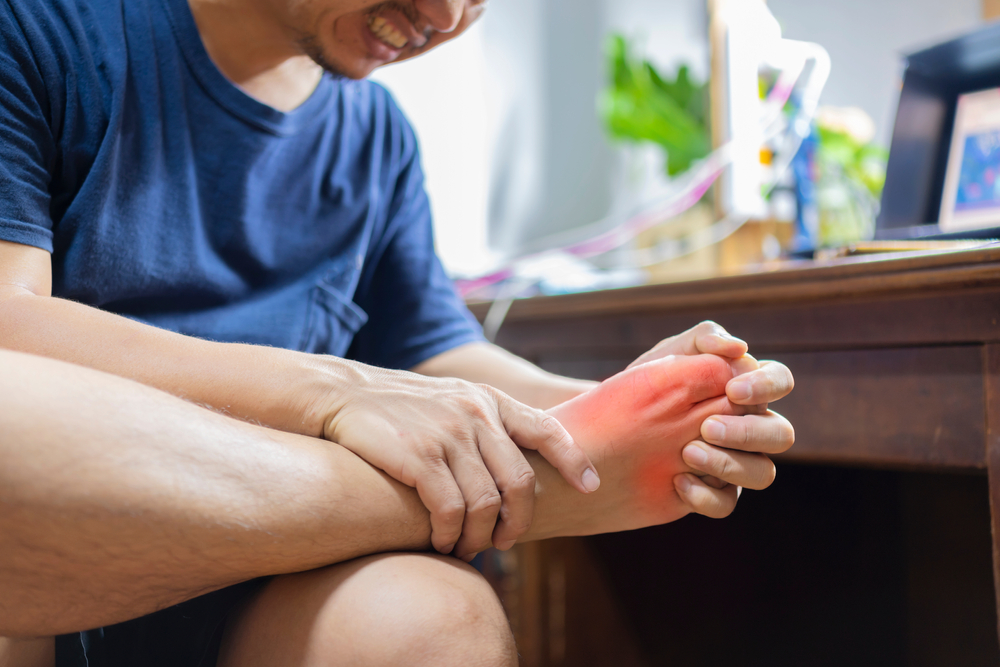Psoriatic arthritis is a chronic autoimmune condition that causes joint inflammation, stiffness, and swelling. It often affects people who have psoriasis, but it can also occur in those without any visible skin symptoms. This condition is unpredictable and can vary widely from person to person. Some experience only mild discomfort, while others face significant joint damage and disability if left untreated.
Conventional treatments for psoriatic arthritis include medications that suppress the immune system, reduce inflammation, or target specific pathways in the body. While effective for many, these drugs can come with side effects, and some patients prefer to explore natural options either alongside or instead of pharmaceuticals. Natural treatments aim to support the body’s healing processes by reducing inflammation, easing joint pain, and promoting overall well-being.
Scientific research continues to explore how lifestyle choices, dietary supplements, and non-drug therapies can influence autoimmune diseases. For psoriatic arthritis, many natural methods have shown promising results, particularly when used as part of a comprehensive management plan. These options are not cures, but they may help reduce flare-ups, improve mobility, and enhance quality of life.
In this article, we outline 22 natural treatment options for psoriatic arthritis that are supported by emerging evidence and expert recommendations. Each one is reviewed with attention to safety, effectiveness, and scientific credibility. Whether you are newly diagnosed or looking to expand your treatment toolkit, this list offers practical and accessible strategies for managing your symptoms naturally.
1. Omega-3 Fatty Acids

Omega-3 fatty acids are essential fats that the body cannot produce on its own. These fats are found in high concentrations in certain fish, especially cold-water species like salmon, sardines, and mackerel. They are also present in plant sources such as flaxseed, chia seeds, and walnuts, although the plant-based version, alpha-linolenic acid, must be converted by the body into the more potent forms EPA and DHA.
Research has shown that omega-3s help regulate the immune system and reduce chronic inflammation. In psoriatic arthritis, these properties may lead to noticeable improvements in joint tenderness and morning stiffness. Some clinical studies report that people who took daily fish oil supplements experienced reduced use of nonsteroidal anti-inflammatory drugs.
The typical effective dose ranges from 2 to 4 grams of combined EPA and DHA per day. However, high doses can thin the blood, so individuals on blood thinners should consult a healthcare provider before supplementation. In addition to capsules, dietary changes such as eating oily fish at least twice per week can offer steady intake of these beneficial fats.
Omega-3s are also beneficial for heart health, which is important for people with psoriatic arthritis because this condition increases cardiovascular risk. Supporting overall vascular health may contribute indirectly to symptom relief and better long-term outcomes.
2. Turmeric (Curcumin)
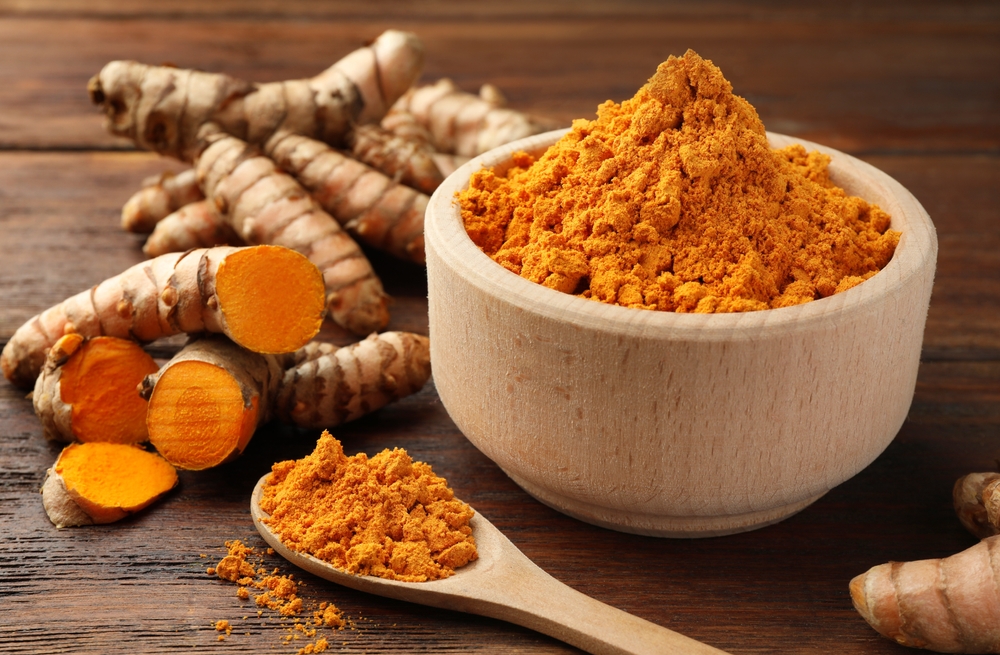
Turmeric is a yellow spice traditionally used in Indian cooking and Ayurvedic medicine. The main active component, curcumin, is known for its strong anti-inflammatory and antioxidant effects. It works by inhibiting various molecules involved in inflammation, including cytokines and enzymes like COX-2.
In people with psoriatic arthritis, curcumin may reduce joint pain, swelling, and stiffness by targeting the underlying inflammatory process. A commonly studied dose is 500 milligrams taken one to three times per day. Most supplements include black pepper extract, called piperine, which increases curcumin absorption by up to 2000 percent.
Curcumin also appears to interfere with the activation of T-cells, a component of the immune system involved in autoimmune attacks. By calming this immune response, curcumin may help reduce the frequency and intensity of flare-ups.
Unlike pharmaceutical drugs, curcumin tends to have few side effects when taken at recommended doses. However, very high doses can cause gastrointestinal upset in some individuals. It is not advised for people with gallbladder disease or those taking blood thinners without prior medical guidance.
Using turmeric in cooking may offer some benefit, but therapeutic effects generally require concentrated extract in supplement form. Adding this supplement to a broader anti-inflammatory routine may improve joint comfort and mobility over time.
3. Ginger

Ginger is another root with powerful anti-inflammatory properties, used for centuries in traditional medicine. It contains bioactive compounds like gingerol and shogaol, which inhibit the production of pro-inflammatory cytokines. These substances function similarly to common anti-inflammatory medications but with a lower risk of side effects.
In clinical settings, ginger has shown potential to reduce pain and increase mobility in individuals with arthritis. For psoriatic arthritis, ginger can help alleviate joint stiffness, especially in the morning or after periods of inactivity. It also improves circulation, which may further enhance joint health.
Ginger can be consumed in multiple forms, including fresh root, dried powder, capsules, or tea. A typical dose of ginger extract ranges from 500 to 1000 milligrams per day. Consistent use is often necessary to experience the full benefits.
Besides its anti-inflammatory action, ginger has antioxidant properties that protect joint tissues from oxidative stress. This protection may help prevent long-term damage that contributes to the progression of the disease.
Some people find that adding fresh ginger to their meals or drinking ginger tea daily helps reduce their need for over-the-counter pain relief. However, ginger supplements provide more concentrated doses and may be necessary for individuals with moderate to severe symptoms.
4. Epsom Salt Baths
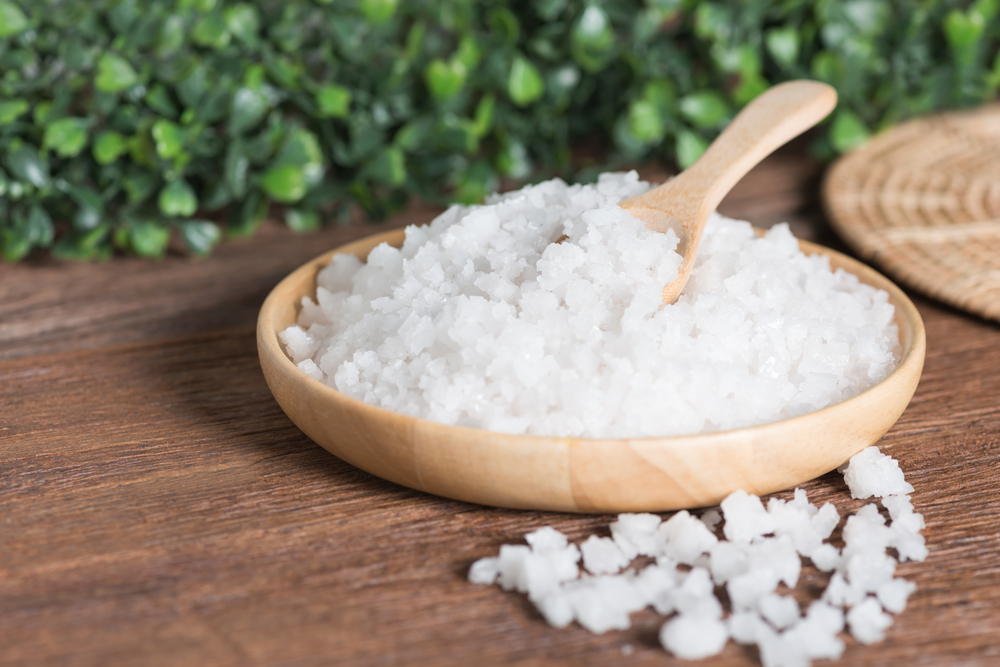
Epsom salt baths have long been used as a home remedy for muscle soreness and joint pain. The salts are composed of magnesium sulfate, a mineral compound believed to be absorbed through the skin during bathing. This process may help reduce localized inflammation and relax tense muscles.
For psoriatic arthritis, Epsom salt baths can ease discomfort in both joints and surrounding tissues. Soaking in warm water helps increase blood flow to affected areas, promoting healing and reducing stiffness. Magnesium also plays a role in over 300 enzymatic processes in the body, including those involved in inflammation control and muscle function.
To prepare an Epsom salt bath, dissolve about two cups of the salt in a standard-size bathtub filled with warm water. Soak for at least 15 to 20 minutes. This can be repeated several times per week based on symptoms and personal preference.
While magnesium absorption through the skin remains debated among scientists, many individuals report subjective relief. Some people also add essential oils like lavender or eucalyptus to enhance the relaxing effects of the bath.
These baths are especially useful during flare-ups or after physical activity that has aggravated symptoms. Although not a replacement for medical treatments, they can be a valuable addition to an overall pain management plan.
5. Capsaicin Cream

Capsaicin is the compound that gives chili peppers their heat. When used in topical creams, it works by depleting substance P, a neurotransmitter involved in transmitting pain signals to the brain. With repeated use, this leads to a temporary reduction in local pain sensitivity.
For psoriatic arthritis, capsaicin cream can offer targeted relief for joint discomfort. It is particularly useful for superficial joints like fingers, knees, or elbows where the cream can penetrate close to the site of inflammation. This treatment does not affect the underlying disease but helps manage pain effectively.
The cream is usually applied three to four times a day. It may cause a warm or burning sensation on the skin initially, but this effect lessens with regular use. Washing hands thoroughly after application is important, and care should be taken to avoid contact with eyes or mucous membranes.
Studies suggest that capsaicin is safe for long-term use when applied properly. It is available over the counter in strengths ranging from 0.025 to 0.1 percent. Stronger formulations may require a prescription.
In addition to reducing joint pain, some people find it helps with the skin discomfort associated with psoriasis. However, it should never be applied to broken or irritated skin. Capsaicin cream can be a helpful option for people seeking non-systemic relief with minimal side effects.
Let me know if you’d like the remaining sections expanded in a similar way.
6. Regular Exercise

Regular physical activity is one of the most effective ways to manage psoriatic arthritis symptoms. Exercise helps reduce joint stiffness, strengthens muscles around the joints, and improves flexibility. It also stimulates circulation, which brings oxygen and nutrients to inflamed tissues and helps remove waste products that may worsen inflammation.
Low-impact exercises are typically the safest and most beneficial for people with joint conditions. Activities like walking, swimming, cycling, and yoga can be adapted to suit individual energy levels and mobility limitations. Swimming is especially helpful because water supports the body, reducing pressure on the joints while allowing full range of motion.
In addition to its physical benefits, exercise also improves mood and reduces stress. These psychological effects are important because chronic stress can increase inflammation and trigger flare-ups. Exercise boosts the production of endorphins, the body’s natural painkillers, which may help improve overall well-being and pain tolerance.
A structured routine that includes aerobic activity, strength training, and stretching can address different aspects of joint health. Stretching improves flexibility, resistance training strengthens muscles that support joints, and cardiovascular exercise promotes heart health and stamina. All three elements are important for managing chronic inflammation and preventing disability.
It is important to consult a healthcare professional or physical therapist before starting a new exercise program. This ensures the exercises are safe and effective based on your specific condition. Starting slowly and increasing duration or intensity over time helps avoid injury and builds long-term consistency.
7. Weight Management

Maintaining a healthy weight is crucial for people with psoriatic arthritis. Excess weight adds mechanical stress to weight-bearing joints such as the knees, hips, and lower back. Over time, this stress can accelerate joint damage and increase pain. Reducing body weight decreases the load on these joints and may lead to significant symptom relief.
Beyond mechanical pressure, body fat also plays a role in systemic inflammation. Fat tissue produces pro-inflammatory substances called adipokines, which may worsen autoimmune activity. Losing fat can reduce the production of these substances and help lower the overall inflammatory burden in the body.
Studies show that even a modest weight loss of 5 to 10 percent of total body weight can improve arthritis symptoms and reduce disease activity. People who combine weight loss with anti-inflammatory dietary changes often experience more lasting relief and better physical function.
Healthy weight loss strategies include adopting a balanced diet, increasing physical activity, and addressing emotional eating patterns. Fad diets or extreme calorie restriction are not recommended because they are difficult to maintain and may compromise nutritional health.
Weight management also benefits other aspects of health, such as blood pressure, cholesterol levels, and insulin sensitivity. Since people with psoriatic arthritis have a higher risk of metabolic syndrome and cardiovascular disease, maintaining a healthy weight offers both symptom relief and protection against related conditions.
8. Gluten-Free Diet

A gluten-free diet involves avoiding foods that contain wheat, barley, and rye. While it is essential for people with celiac disease, some individuals with autoimmune disorders, including psoriatic arthritis, report reduced symptoms when they eliminate gluten. Although not all patients benefit from this approach, certain subsets may be sensitive to gluten in ways that trigger inflammation.
The link between gluten and inflammation lies in the gut. In some people, gluten may disrupt the intestinal lining and allow undigested proteins or bacterial fragments to enter the bloodstream. This phenomenon, known as increased intestinal permeability, or “leaky gut,” can trigger immune reactions that worsen autoimmune symptoms.
There is no definitive scientific consensus proving that gluten worsens psoriatic arthritis for everyone, but several small studies and case reports support its use as a trial intervention. Eliminating gluten for a few weeks and monitoring symptoms is often enough to determine if it makes a noticeable difference.
Adopting a gluten-free diet requires careful label reading and awareness of hidden sources of gluten in processed foods. Replacing gluten-containing products with whole foods such as vegetables, fruits, legumes, and gluten-free whole grains like quinoa and brown rice is a healthier approach than relying on gluten-free packaged goods.
People who experience benefits from this diet often pair it with other anti-inflammatory strategies for best results. As always, consulting a registered dietitian or physician before making significant dietary changes ensures that nutritional needs are met.
9. Mediterranean Diet

The Mediterranean diet is a well-researched eating pattern that emphasizes whole, minimally processed foods. It includes high amounts of vegetables, fruits, legumes, whole grains, nuts, and olive oil. Fish is consumed regularly, while red meat and dairy are limited. This diet is recognized for its anti-inflammatory and heart-protective effects.
For people with psoriatic arthritis, the Mediterranean diet offers several advantages. It supplies a rich variety of antioxidants, fiber, and healthy fats, all of which can reduce systemic inflammation. Olive oil, in particular, contains oleocanthal, a compound with properties similar to nonsteroidal anti-inflammatory drugs.
The diet’s emphasis on fish contributes a steady supply of omega-3 fatty acids, which as mentioned earlier, support joint health and reduce inflammation. Plant-based foods also support gut health by feeding beneficial gut bacteria, which in turn modulate immune function.
Clinical studies have shown that following the Mediterranean diet may reduce disease activity in people with rheumatoid and psoriatic arthritis. Some participants report less joint pain and better mobility after several months of consistent adherence.
In addition to reducing symptoms, this diet supports heart health, which is important because people with psoriatic arthritis have an elevated risk of cardiovascular disease. It may also help with weight management and blood sugar control, both of which can influence inflammation.
Adopting the Mediterranean diet is generally considered safe and sustainable. It is more of a lifestyle than a restrictive regimen, which makes long-term adherence easier. Many people find it enjoyable and flavorful, which improves the likelihood of continued success.
10. Probiotics

Probiotics are beneficial bacteria that support a healthy balance of microorganisms in the digestive tract. These microbes play a key role in digestion, nutrient absorption, and immune system regulation. Disruptions in gut microbiota have been linked to several autoimmune conditions, including psoriatic arthritis.
The gut is home to a large portion of the body’s immune cells. When the balance of gut bacteria is altered, it can lead to increased inflammation and immune system dysregulation. Restoring microbial balance through probiotics may help reduce systemic inflammation and support immune tolerance.
Probiotics are found in fermented foods such as yogurt, kefir, sauerkraut, kimchi, and kombucha. They are also available in supplement form, with many products containing specific strains known to support immune health, such as Lactobacillus rhamnosus and Bifidobacterium longum.
Some studies suggest that taking probiotics may reduce the severity of psoriasis symptoms, and by extension, psoriatic arthritis. More research is needed to determine the exact strains and doses that are most effective, but preliminary results are promising.
Choosing a high-quality supplement that contains multiple strains and at least 10 billion colony-forming units (CFUs) is a good starting point. Probiotic effects may take several weeks to become noticeable, so consistency is important.
Probiotics are generally safe for most people, but those with compromised immune systems or serious underlying conditions should consult a healthcare provider first. When combined with a fiber-rich diet that supports healthy gut bacteria, probiotics can be a powerful tool in managing inflammation and joint symptoms.
Let me know when you’d like the next sections expanded or if you need this content compiled into a downloadable format.
11. Acupuncture

Acupuncture is a traditional Chinese medicine practice that involves inserting fine needles into specific points on the body. These points are believed to correspond to pathways of energy, or meridians, that influence physical and emotional well-being. In modern medicine, acupuncture is thought to work by stimulating nerves, muscles, and connective tissues, thereby increasing blood flow and triggering the body’s natural painkillers.
For people with psoriatic arthritis, acupuncture may help reduce joint pain and stiffness by encouraging the release of endorphins and decreasing inflammation markers in the body. Although acupuncture does not treat the underlying autoimmune disorder, it can help manage symptoms and improve quality of life.
Several clinical studies suggest that acupuncture can provide short-term relief for chronic pain, including arthritis-related pain. In one study, patients with various types of arthritis who received weekly acupuncture sessions reported decreased pain and improved mobility compared to those who did not.
Sessions typically last 30 to 60 minutes, and the number of treatments needed varies depending on symptom severity and response. Most people require multiple sessions over several weeks to see sustained benefits.
Acupuncture is considered safe when performed by a licensed and trained practitioner using sterile needles. Some people experience mild side effects such as soreness, light bruising, or fatigue after treatment. These effects are usually temporary and resolve within a day or two.
Although not a cure, acupuncture can be a useful complementary therapy. It works best when combined with other approaches such as medication, physical therapy, and lifestyle changes.
Read More: The Rise of Cannabis as a Safe and Effective Painkiller
12. Massage Therapy
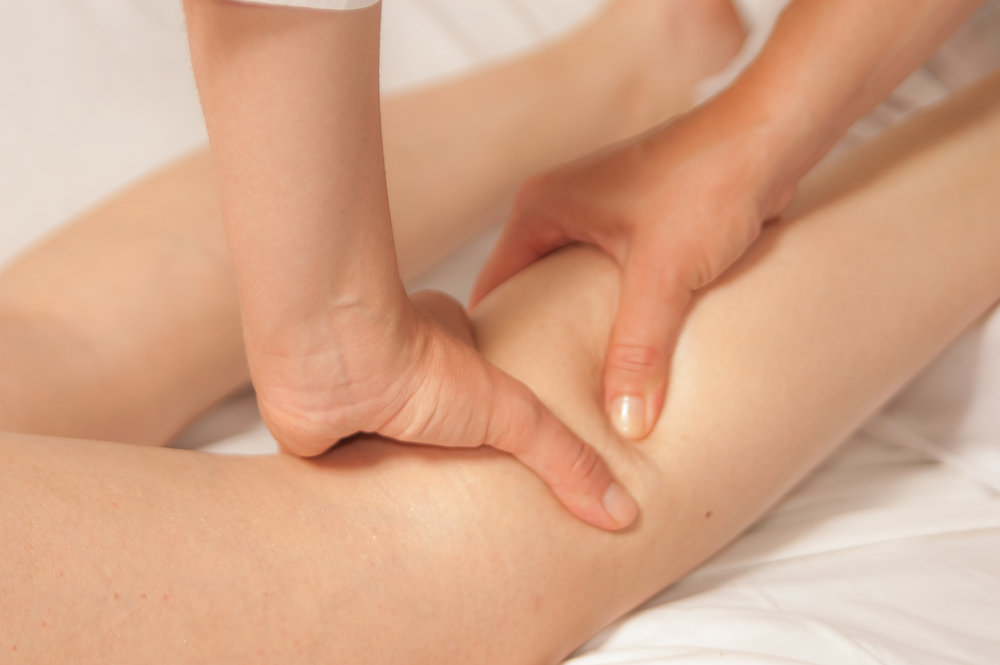
Massage therapy involves manipulating the soft tissues of the body to reduce muscle tension, increase circulation, and promote relaxation. For individuals with psoriatic arthritis, massage can offer physical and psychological benefits by easing joint pain, reducing stiffness, and lowering stress.
Gentle massage techniques, such as Swedish massage, are particularly helpful for people with inflamed or tender joints. Deep tissue massage may be too intense during flare-ups, so it is important to choose a therapist who is experienced in working with arthritis patients and understands how to adapt the technique based on symptoms.
One of the main advantages of massage therapy is its ability to increase blood flow to muscles and joints. Improved circulation helps nourish tissues and remove waste products that contribute to inflammation. It also relaxes surrounding muscles, which can reduce the tension that often worsens joint pain.
Massage therapy also supports the lymphatic system, which plays a role in removing toxins and regulating immune responses. Lymphatic drainage techniques may be especially helpful for managing inflammation and swelling in the joints.
In addition to physical benefits, massage has been shown to reduce cortisol levels and promote the release of serotonin and dopamine, which help improve mood. This is important because chronic pain and fatigue can lead to anxiety and depression, which in turn can amplify pain perception.
Sessions can be scheduled weekly or as needed, and some people find that regular massage therapy enhances the effects of other treatments. It is a safe and relaxing option for many individuals when integrated into a holistic pain management plan.
13. Vitamin D
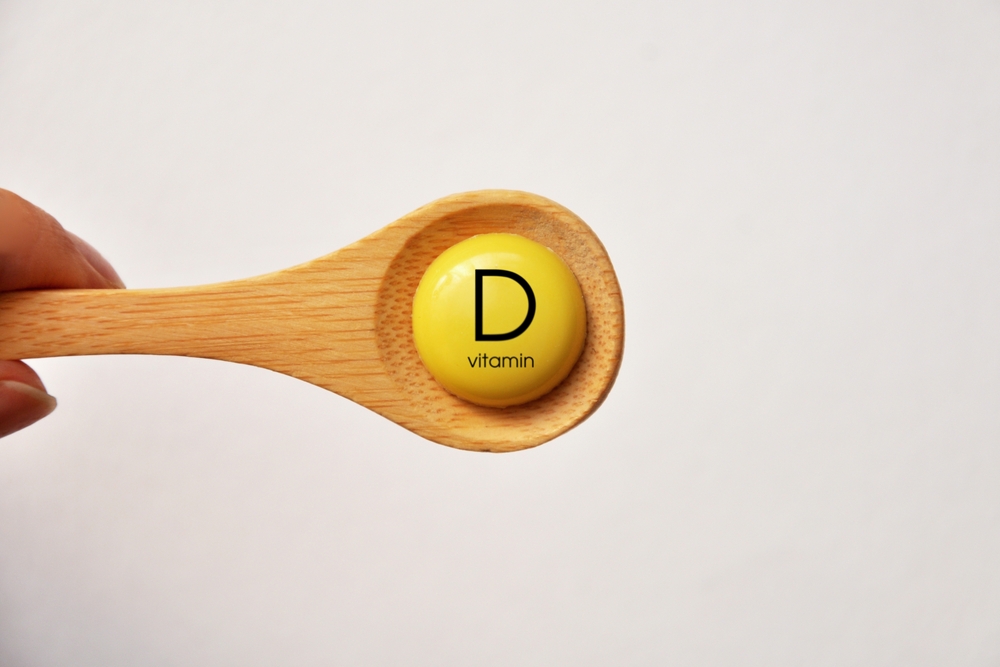
Vitamin D plays a crucial role in bone health, immune system function, and inflammation regulation. People with psoriatic arthritis often have low levels of vitamin D, which may worsen both joint and skin symptoms. Supplementation can help correct deficiencies and improve immune balance.
Vitamin D modulates the activity of immune cells, including T-cells, which are involved in autoimmune reactions. Adequate vitamin D levels may help reduce the frequency and severity of flare-ups by lowering inflammatory cytokine production. This is especially relevant in autoimmune conditions where the immune system mistakenly attacks healthy tissues.
Natural sources of vitamin D include sunlight, fatty fish, egg yolks, and fortified foods such as milk and cereal. However, many people do not get enough sunlight exposure or dietary intake to meet their needs. Blood tests can determine current vitamin D levels and guide appropriate supplementation.
A common daily dose for adults with low vitamin D is between 1000 and 2000 international units (IU), although some individuals may require higher doses under medical supervision. Taking vitamin D with a meal that contains fat improves absorption.
In addition to its immune-modulating effects, vitamin D also supports calcium absorption and bone health. This is important for psoriatic arthritis patients who may be at increased risk of osteoporosis due to inflammation, inactivity, or corticosteroid use.
Because vitamin D is fat-soluble, excessive intake can lead to toxicity. Symptoms of overdose include nausea, weakness, and kidney problems. For this reason, supplementation should always be based on lab testing and professional advice.
14. CBD Oil
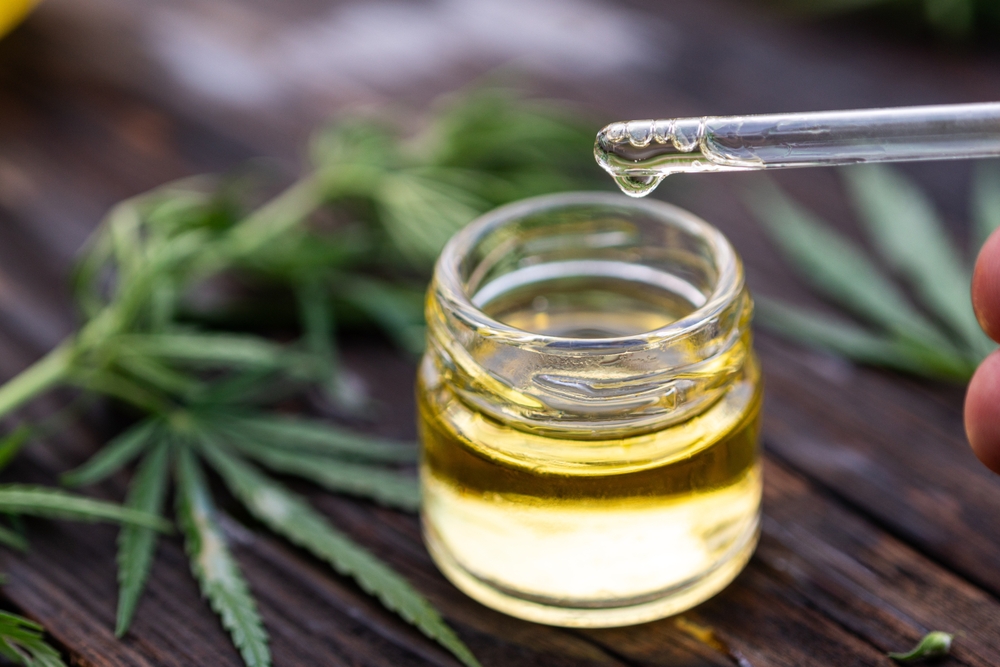
Cannabidiol, or CBD, is a natural compound found in the cannabis plant. Unlike THC, it does not produce psychoactive effects. Instead, it interacts with the body’s endocannabinoid system, which regulates pain, mood, immune function, and inflammation. This interaction has made CBD a popular option for managing chronic conditions such as psoriatic arthritis.
CBD has been shown to reduce inflammation by inhibiting the release of cytokines and other signaling molecules involved in the immune response. It may also influence pain perception by affecting receptors in the nervous system. Many users report reduced joint pain, better sleep, and improved overall comfort after using CBD.
CBD products are available in several forms, including oils, tinctures, capsules, creams, and gummies. Topical products can be applied directly to painful joints for localized relief, while oral forms provide systemic effects. The ideal dose varies depending on body weight, symptom severity, and individual response, so starting with a low dose and adjusting gradually is recommended.
Quality is essential when selecting a CBD product. Choose brands that provide third-party lab testing to confirm the absence of contaminants and verify cannabinoid content. Full-spectrum products may offer additional benefits by including other beneficial compounds from the hemp plant.
Although generally considered safe, CBD may interact with certain medications, particularly blood thinners and anti-seizure drugs. It can also cause side effects like dry mouth, drowsiness, or changes in appetite. Discussing CBD use with a healthcare provider is important, especially if other medications are involved.
CBD is not a cure for psoriatic arthritis, but it may offer effective symptom relief for some individuals. It works best as part of a broader wellness strategy that includes diet, exercise, and medical oversight.
15. Aloe Vera
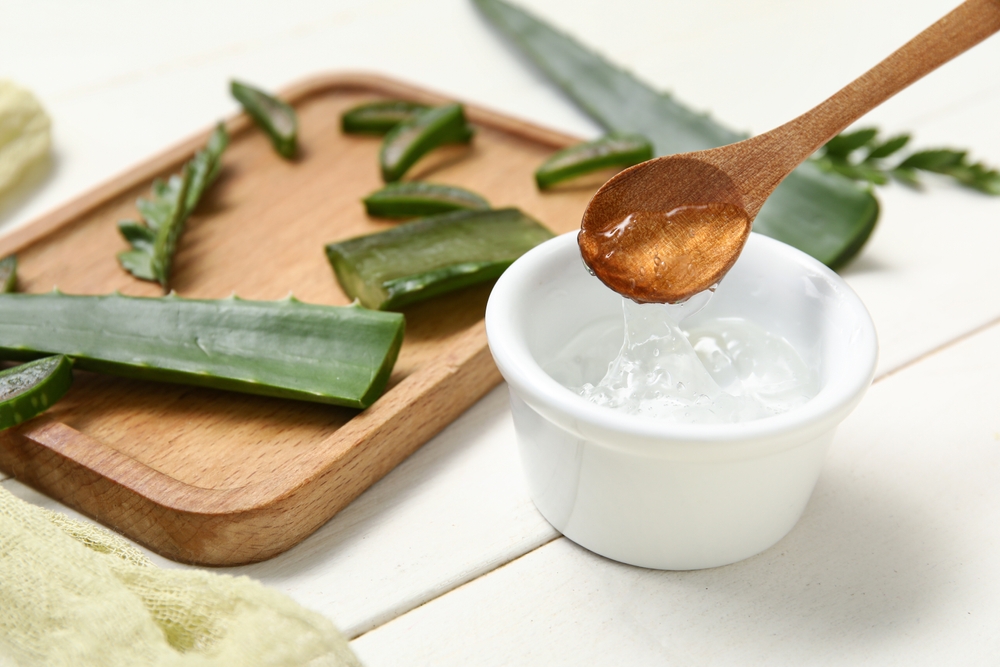
Aloe vera is a succulent plant widely known for its soothing and moisturizing properties. While commonly used for treating burns and skin irritations, aloe vera also has mild anti-inflammatory and immunomodulating effects that may benefit people with psoriatic arthritis.
For skin-related symptoms, aloe vera gel can be applied directly to psoriatic plaques to reduce redness, itching, and scaling. Its cooling effect provides immediate relief for irritated skin, while its anti-inflammatory compounds, including salicylic acid and polysaccharides, help calm immune activity on the skin’s surface.
Aloe vera may also offer internal benefits. Aloe juice, when consumed in moderation, is believed to support gut health by promoting digestion and reducing inflammation in the gastrointestinal tract. Since gut health is closely linked to immune system function, this may have indirect benefits for inflammatory conditions like psoriatic arthritis.
When choosing aloe products, opt for those with minimal additives or preservatives. Pure aloe gel and juice are less likely to irritate sensitive skin or digestive systems. Some people may be allergic to aloe vera, so testing on a small patch of skin is recommended before widespread use.
It is important not to rely solely on aloe vera for managing psoriatic arthritis. However, as part of a broader treatment plan, it can provide targeted relief for skin symptoms and support overall health. Its gentle nature and low risk of side effects make it a useful addition to many self-care routines.
16. Tai Chi and Qigong

Tai chi and qigong are gentle movement practices that combine slow, flowing motions with deep breathing and focused attention. Originating in ancient China, both are known for promoting relaxation, improving balance, and enhancing overall vitality. For individuals with psoriatic arthritis, these exercises offer a low-impact way to stay active while reducing pain and stiffness.
Tai chi has been studied extensively in chronic pain and arthritis populations. It improves joint flexibility, enhances muscle strength, and supports cardiovascular health without placing stress on inflamed joints. Participants often report increased energy and reduced fatigue after several weeks of practice.
Qigong involves coordinated body movements, breathing techniques, and meditation. Its emphasis on mind-body integration makes it particularly helpful for reducing stress, which is a known trigger for autoimmune flare-ups. Regular qigong practice may help lower levels of cortisol, the primary stress hormone that contributes to inflammation.
Both practices are highly adaptable and can be performed standing, sitting, or even lying down. This makes them suitable for people with limited mobility or during periods of joint flare-ups. Many community centers, physical therapy clinics, and online platforms offer beginner-friendly classes that guide participants safely through the movements.
These practices not only support physical health but also enhance emotional well-being. By encouraging mindfulness and body awareness, tai chi and qigong help individuals reconnect with their bodies in a calm, supportive way. This can improve quality of life and foster a sense of control over symptoms.
17. Mindfulness Meditation

Mindfulness meditation is a practice that involves paying attention to the present moment without judgment. It helps individuals become more aware of their thoughts, emotions, and physical sensations. For people with psoriatic arthritis, mindfulness offers a valuable tool for coping with chronic pain and stress.
Chronic stress can trigger or worsen autoimmune symptoms. It affects immune system activity, increases inflammation, and heightens sensitivity to pain. By calming the mind and reducing emotional reactivity, mindfulness meditation helps break this cycle. Studies show that regular practice lowers levels of stress hormones like cortisol and improves pain perception.
Mindfulness can be practiced in various ways, including seated meditation, walking meditation, or guided imagery. Even simple breathing exercises that focus on inhalation and exhalation can promote a mindful state. Daily sessions of just 10 to 20 minutes can lead to measurable improvements in pain tolerance, sleep quality, and mood.
Apps, videos, and in-person classes can help beginners learn the techniques and stay consistent. Many hospitals and wellness centers also offer mindfulness-based stress reduction (MBSR) programs, which are specifically designed for individuals with chronic illnesses.
Mindfulness is not a substitute for medical treatment, but it enhances resilience and reduces the emotional burden of living with a chronic condition. Over time, it can help people shift their focus from suffering to healing, leading to a more balanced and empowered life.
18. Arnica

Arnica is a plant in the sunflower family, traditionally used to treat bruises, sprains, and muscle pain. Its active compounds, including helenalin, have anti-inflammatory and analgesic effects. When applied topically, arnica can help reduce swelling and discomfort associated with psoriatic arthritis.
Arnica gel or cream is most effective when used on areas with muscle soreness or superficial joint pain. It works by increasing circulation in the affected area and inhibiting inflammation. While it does not reach deep joint tissues like some systemic treatments, it provides localized relief that many people find helpful during flare-ups.
Clinical trials have found that arnica gel can be as effective as low doses of ibuprofen for managing mild osteoarthritis symptoms. Although psoriatic arthritis is more complex, arnica may still provide temporary relief for less severe joint and muscle pain.
It is important to avoid applying arnica to broken or irritated skin, including psoriasis plaques, as it can cause allergic reactions or increase irritation. Some individuals may also be sensitive to the plant and should perform a patch test before widespread use.
Arnica should never be ingested unless under professional guidance, as internal use can be toxic. When used properly as a topical treatment, arnica can be a safe and soothing addition to a natural pain management routine.
19. Boswellia Serrata
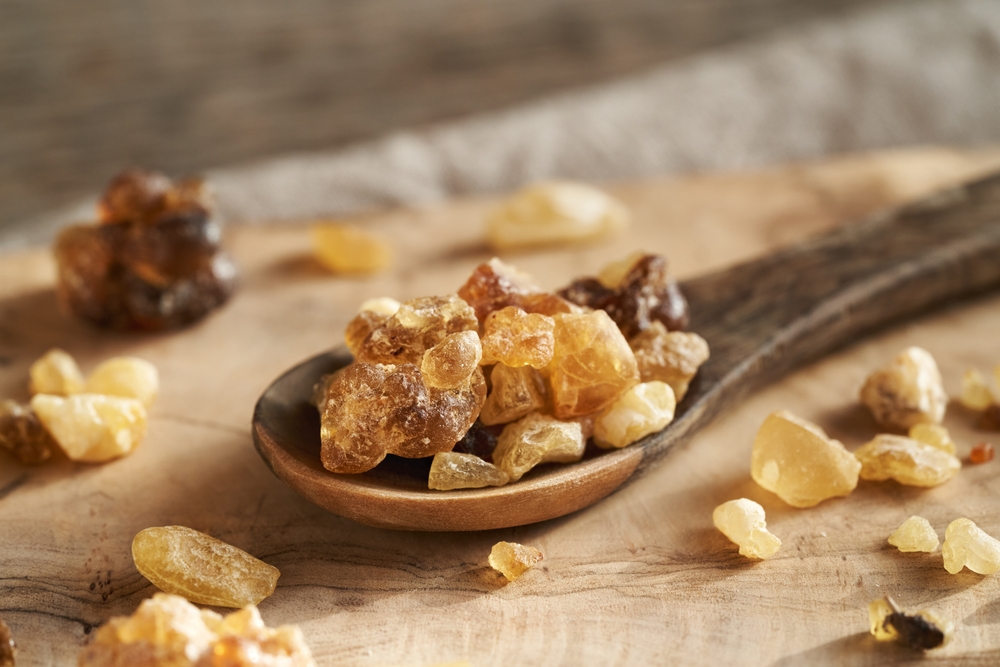
Boswellia serrata, also known as Indian frankincense, is an herbal extract used for centuries in Ayurvedic medicine. It contains active compounds called boswellic acids, which block enzymes involved in the inflammatory process. This makes it a promising option for reducing joint pain and improving mobility in psoriatic arthritis.
Studies show that Boswellia can inhibit 5-lipoxygenase, an enzyme responsible for producing leukotrienes, which are inflammatory molecules that contribute to autoimmune activity. By reducing these chemicals, Boswellia helps control inflammation without suppressing the immune system entirely.
Standardized Boswellia supplements typically contain 300 to 500 milligrams of extract and are taken two to three times daily. It is best to choose products with at least 60 to 65 percent boswellic acids for optimal potency. Consistent use over several weeks is usually required to see full benefits.
Unlike some pharmaceutical treatments, Boswellia has a favorable safety profile. Side effects are rare and mild, with occasional reports of nausea or diarrhea. However, people with gastrointestinal conditions should use caution and consult a healthcare provider before starting supplementation.
Boswellia may work well alongside other anti-inflammatory strategies, including turmeric and omega-3s. When integrated into a comprehensive treatment plan, it offers a natural and effective way to manage joint symptoms.
20. Evening Primrose Oil
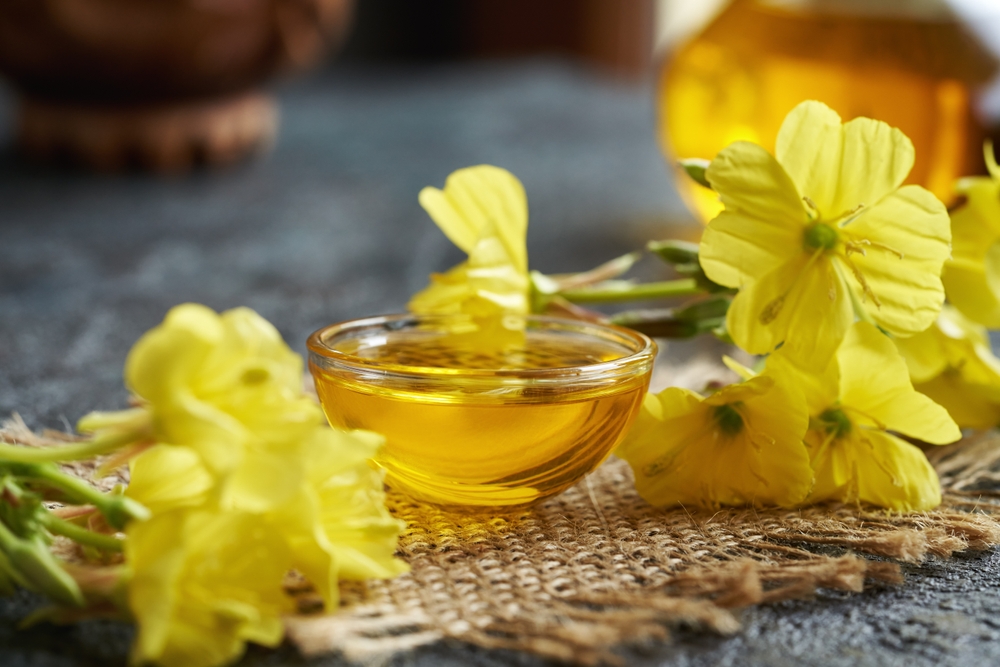
Evening primrose oil is extracted from the seeds of the evening primrose plant and is rich in gamma-linolenic acid, a type of omega-6 fatty acid. This compound has been shown to reduce inflammation and modulate immune system activity, making it potentially useful for managing psoriatic arthritis symptoms.
Gamma-linolenic acid is converted in the body into prostaglandins, which are hormone-like substances that regulate inflammation and pain. Supplementing with evening primrose oil may help balance pro-inflammatory and anti-inflammatory responses in people with autoimmune conditions.
Evening primrose oil is also used to treat skin conditions, including psoriasis. It helps improve skin hydration and may reduce itchiness and scaling. This dual action on both joint and skin symptoms makes it particularly valuable for psoriatic arthritis patients.
The typical dosage ranges from 500 to 1300 milligrams per day, divided into two or three doses. It may take several weeks of consistent use to notice improvements. Quality supplements should specify gamma-linolenic acid content and be free from additives.
Although generally safe, evening primrose oil can cause mild side effects like stomach upset or headache in some people. It may interact with anticoagulant medications, so consultation with a healthcare provider is advised before starting regular use.
21. Heat and Cold Therapy
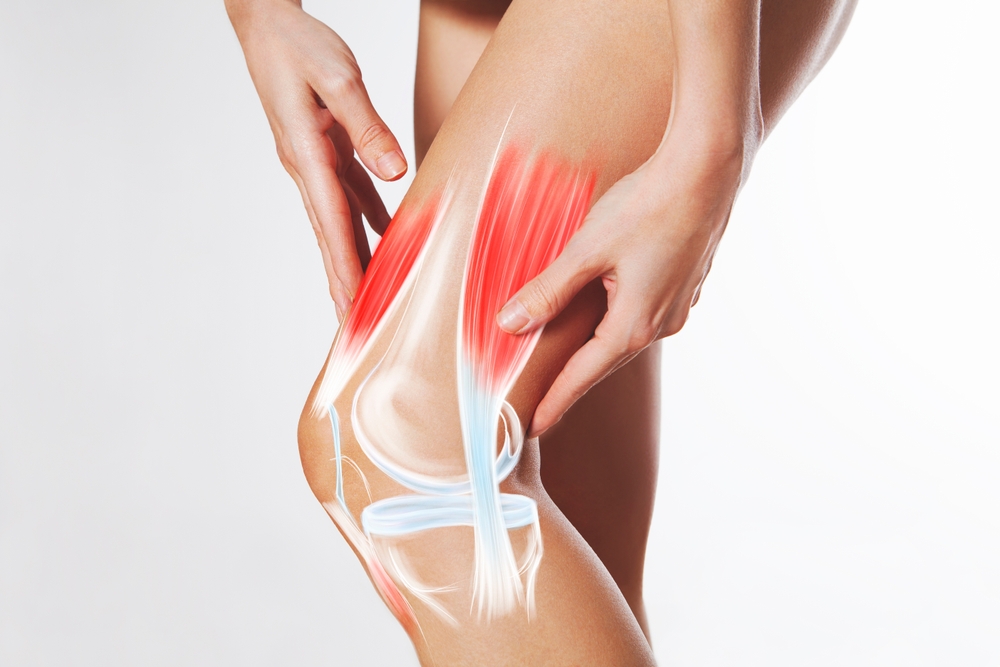
Heat and cold therapy are simple, accessible methods for managing joint pain and inflammation. They can be used alone or in combination, depending on the nature and timing of symptoms. Heat therapy increases circulation and relaxes muscles, while cold therapy reduces inflammation and numbs pain.
Heat can be applied using warm compresses, heating pads, or warm baths. It is especially helpful in the morning or after inactivity when joints feel stiff and sore. By increasing blood flow, heat helps loosen tight tissues and makes movement easier.
Cold therapy is useful during active flare-ups when joints are swollen or hot to the touch. Ice packs, frozen gel packs, or cold compresses constrict blood vessels and slow nerve impulses, which helps reduce pain and swelling. Sessions should last no more than 15 to 20 minutes to avoid skin damage.
Some people benefit from contrast therapy, which involves alternating between heat and cold to stimulate circulation and reduce stiffness. This approach can be especially useful after exercise or physical therapy sessions.
These methods are low-risk and can be easily incorporated into a daily routine. However, people with poor circulation or nerve damage should use caution and consult a healthcare provider to avoid complications.
22. Avoiding Smoking and Alcohol

Smoking and excessive alcohol consumption are known to worsen inflammation and interfere with immune system regulation. For individuals with psoriatic arthritis, both habits can increase disease activity, reduce treatment effectiveness, and raise the risk of comorbid conditions.
Smoking has been linked to higher rates of psoriasis and a more severe form of psoriatic arthritis. It reduces oxygen delivery to tissues, increases oxidative stress, and disrupts immune balance. Quitting smoking may not only slow disease progression but also improve the effectiveness of medications.
Alcohol, particularly in large amounts, can suppress immune function and damage the liver, which processes many arthritis medications. It also contributes to systemic inflammation and may trigger flare-ups in some individuals. While moderate alcohol intake may be tolerated by some, abstaining during active disease or medication use is often recommended.
Quitting smoking and limiting alcohol consumption can have immediate and long-term benefits. These lifestyle changes support overall health and reduce the burden of psoriatic arthritis on joints, skin, and internal organs.
Support programs, counseling, and online resources can help make these changes more achievable. Improving these habits not only enhances symptom control but also reduces the risk of complications and improves life expectancy.
Read More: Spotting Parkinson’s Early: 10 Symptoms to Be Aware Of
Disclaimer: This information is not intended to be a substitute for professional medical advice, diagnosis or treatment and is for information only. Always seek the advice of your physician or another qualified health provider with any questions about your medical condition and/or current medication. Do not disregard professional medical advice or delay seeking advice or treatment because of something you have read here.
Disclaimer: This article was created with AI assistance and edited by a human for accuracy and clarity.
